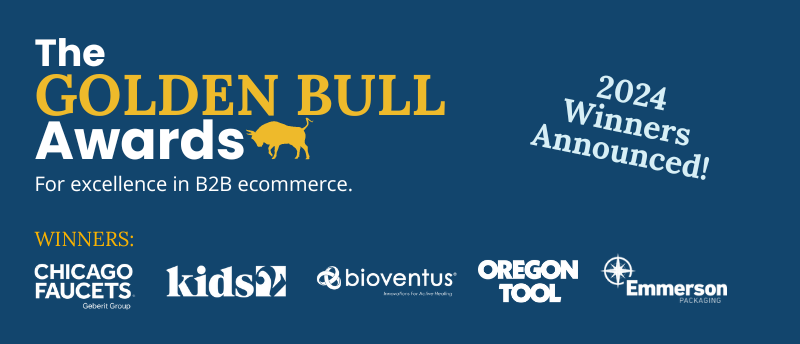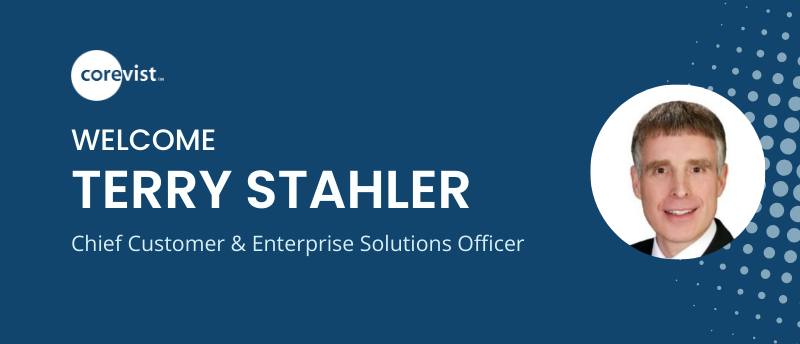Share
Author
Sam Bayer
Share
Scalable ecommerce for growing B2B organizations
In the SAP B2B market, manufacturers are always expanding brands and geographies via acquisition. Aside from the increased revenue, part of the manufacturer’s rationale for the acquisition is the increased operational efficiencies that will follow. The #1 operational efficiency is bringing the acquired company onto SAP. Now you’ve removed all sorts of redundancies in software, people, processes.
Sounds exciting—but it’s also terrifying. In this industry, when people hear that they have to migrate to SAP, they get scared to death. “Holy cow, where’s the door? As soon as they acquire us, I’m out of here!”
It doesn’t have to be like that. Yes, acquisitions are painful for a lot of organizations, but Corevist believes that ecommerce shouldn’t be part of that pain. That’s why our solution, Corevist Commerce, scales with acquisitions. In this article, I’d like to talk about why a scalable solution matters and what it means for B2B manufacturers who are growing through acquisitions. We’ll look at 4 benefits of a scalable solution, as well as how that has played out at 5 Corevist clients who are growing through acquisitions.
1. The acquired company gets ecommerce in weeks, not months
This is the biggest benefit—and you won’t find it anywhere else. Once you’ve acquired a new company and added their product line to SAP, they can be up and running with their own ecommerce store in a matter of weeks.
That’s right—not months. Weeks.
The exact timeline depends on the particulars, of course. Some setup will always be required—for example, you’re probably bringing the new company into SAP with their own sales area. But even that won’t hold back the scalability of Corevist Commerce. Sans catalog, as soon as their SAP system is migrated, they should be able to place and track orders within Corevist.
That’s a huge value add when you’re negotiating an acquisition. Let’s take a moment to talk about that.
2. Scalable ecommerce is a huge value-add in acquisition negotiations
In the B2B world, most companies that are getting acquired don’t have an ecommerce store. If they do, it isn’t integrated to their ERP system in real time. From this perspective, getting acquired by a company that already runs scalable ecommerce is a huge value-add. It means the acquired company gets to benefit from the investments which the acquirer has already made.
That’s why scalable ecommerce is a game-changer in acquisitions. It can transform the acquisition process from “this is painful” to “hey, this is exciting!”
For manufacturers who already have scalable, SAP-integrated ecommerce in place, that asset can become a carrot that you hold out to the potential acquisition. It shows them that you care and you’re equipped to drive their business toward greater efficiency. What a great way to start that relationship.
3. Easy ecommerce implementation before you consolidate SAP systems
After acquiring a company, most organizations plan to consolidate everything to one SAP instance. Obviously, that’s a huge project. It may take several years. In the interim, you may want to get your acquisition up and running with ecommerce that’s integrated to their separate SAP system. The question—will that ecommerce store play nice with the future, singular, consolidated SAP system?
Yes! With Corevist Commerce, you can implement ecommerce for subsidiaries that are on their own SAP system. When you go to consolidate all those legacy SAP instances into one instance, Corevist Commerce is totally transparent. The same Corevist instance that worked for the subsidiary’s standalone SAP is ready to support the same ecommerce store talking to your consolidated SAP.
Why does this matter?
It means you can drive ecommerce value now (before consolidation) and later (after consolidation) without heavy reinvestment. It means you don’t have to table ecommerce until consolidation. You can leverage the efficiencies and increased revenue of the digital commerce model—and you can do it right now. That’s huge.
Now let’s talk about after consolidation. How does Corevist Commerce scale with one SAP instance?
4. One SAP, one Corevist instance, unlimited microsites
This is where the architecture of Corevist Commerce really shines. Because of our architecture, your new subsidiary gets the centralized SAP data after consolidation, but they also get the independence of a separate website to manage merchandising, branding, and so on. Now in reality, it isn’t a separate website—rather, a microsite, a separate storefront. But from the perspective of the subsidiary’s Marketing department, it looks like a separate website and gives them all the control they need. They’re happy!
You can really see our alignment with SAP here. SAP is meant to be the ultimate back-office system for large, multinational organizations. It’s meant to sustain an entire global corporation on a single instance. We know SAP, and we know the value of that kind of thinking. That’s why we’ve architected Corevist Commerce to do the very same thing, transparently—a single instance of Corevist against a single instance of SAP, serving as many microsites as you need for separate ecommerce brands or sales areas.
The more your SAP is implemented in a template fashion, the easier it is to launch ecommerce microsites when a new subsidiary or acquisition comes on board. Your SAP health is your ecommerce health—and the ecommerce website comes up that much faster when your SAP system is templatized.
Isn’t this a great story? Now, to keep things balanced, let’s talk about the opposite situation for a moment. What happens when a global corporation doesn’t engage a scalable ecommerce solution integrated to their SAP?
Caveat for companies that choose a non-scalable solution…
One of our clients is a global manufacturer with divisions in North America, EMEA, Latin America, and APAC. All 4 areas are on separate SAP systems. EMEA had the most pressing need, so they engaged Corevist Commerce and went live in 2016.
Around that time, no other division in the company decided to engage Corevist. Each division chose a different ecommerce solution. No one wanted to implement on top of their existing SAP system. They wanted to upgrade SAP and go their own way.
Let me tell you something. Two years later, that EMEA division on Corevist Commerce is the only one with an ecommerce store.
In fact, the North American division went with a solution recently purchased by Salesforce. Two years later, are they live?
Nope.
I guess you could say a scalable solution matters.
Enough doom and gloom. Let’s quickly highlight a few Corevist clients who are growing with acquisitions (and scaling ecommerce to match).
Corevist clients who have grown with acquisitions
Each of these companies has grown through acquisitions after implementing Corevist Commerce. With a single instance of Corevist mapped to a single SAP, that growth process was extraordinarily simple from the perspective of ecommerce architecture.
A major flooring manufacturer
This flooring manufacturer encountered a crisis when one of their biggest distributors went out of business. They acquired all of their distributor’s customers. There was a lot of business value locked up in those customer relationships, but the manufacturer had to adapt to reach the old distributor’s customers. Suddenly, they had to learn to distribute their own product.
With Corevist Commerce, the manufacturer was able to extend ecommerce to this new market.
A major art supplies manufacturer
This manufacturer has a plant in Vietnam. That subsidiary “buys” raw material from the manufacturer, who ships it to them in Vietnam. The subsidiary performs intermediate manufacturing, and the manufacturer “buys back” the final product from them, then ships it to the US for final assembly and distribution.
The subsidiary is a separate company, but they’re on the same SAP system. Because the manufacturer implemented Corevist Commerce, they have a quick, easy way to do business with the subsidiary without having to worry about EDI, training the subsidiary’s staff on SAP, and so on.
A major chemical manufacturer
This manufacturer launched Corevist Commerce to sell chemicals through a single division. After the ecommerce store went live, the manufacturer bought the assets of one of their competitors. Now they had to expand. They put the acquired company on SAP and scaled their ecommerce operation to match. The result? All products acquired through the purchase of the company are now available in the manufacturer’s existing Corevist Commerce instance.
A major medical supplies manufacturer
This manufacturer was struggling to get their salespeople and customers to use their eCommerce website. There were too many discrepancies between what the website presented as product availability and pricing versus what SAP understood. And that was before acquisitions!
After implementing Corevist Commerce, the company found the solution so scalable, they were able to grow seamlessly through acquisitions. They’ve gone from $100M in revenue to $1B in their 9 years on Corevist Commerce—all while acquiring other companies and integrating them into SAP.
A major manufacturer of forestry and construction equipment
As this manufacturer pursued an acquisition, it was a selling point to demonstrate to their potential acquiree that they had a world-class B2B ecommerce website. The manufacturer completed the acquisition, and we built a microsite for them that sold the products of the acquired company.
In fact, this manufacturer’s story is so exciting, I’d like to invite you to read the full case study below.
Moving forward: Case study
As you can see, scaling with acquisitions is a pattern among Corevist clients. However expandable your SAP system is, Corevist Commerce is just as scalable. As your company grows, Corevist Commerce grows with you.
As promised, here’s the case study. Blount International launched ecommerce within 90 days and recently scaled up with the acquisition of Woods, a manufacturer of mowing, digging, and construction equipment. Download the case study below to find out how Corevist Commerce revolutionized Blount’s business.









